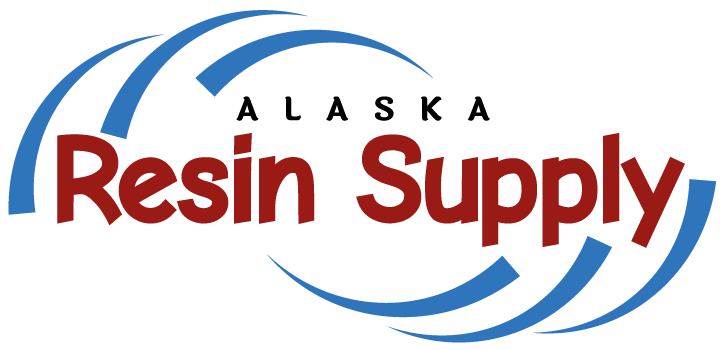1. Epoxy’s Strength Comes from Its Chemical & Mechanical Bond
An epoxy coating is made up of two parts—a Part A Resin and a Part B Hardener. They are mixed immediately before they are applied to the floor, and the chemical reaction causes them to bond to one another and to the floor. Epoxy is extremely durable and won’t peel or chip away from the flooring surface—if it was tested for high moisture and prepared properly beforehand.
2. Moisture Testing is Critical for Success
Moisture vapor is one of the most common causes of failure in epoxy floors. High humidity or vapor in the concrete can prevent the epoxy bonds from forming while slowing the curing process. This is why it’s critical to get a moisture test done first and have any problems dealt with before applying an epoxy. There are epoxy products that are designed to handle high moisture.
3. Surface Preparation is Key
Depending on the type of flooring you are installing epoxy on, you will need to use different equipment to prepare it. Wood flooring requires a floor sander. Concrete flooring requires diamond grinders or shot blasters. Acid etching is NOT recommended. It creates an inconsistent surface for bonding, is toxic, and is often difficult to clean up safely. The best Concrete Surface Profile (CSP) is created by mechanically grinding the surface. Check your product data carefully for information on surface preparation steps and the required CSP for a good bond.
4. Epoxy Can Be Applied to Most Flooring Surfaces
While epoxy is most commonly applied to concrete floors, it can also be used to provide a protective layer to any hard surface including metal, tile, and wood flooring. But again, these surfaces must be prepared carefully to ensure the epoxy bonds properly to the floor. Check your product data carefully for information on the surfaces it can be applied to successfully.
5. Flexible-Grade Epoxy is Better for Wood Floors
Flexible-grade epoxy floors are much stronger than their rigid counterparts, especially in terms of wood flooring. Wood subfloors require a flexible grade epoxy because they move and shift which can cause a rigid epoxy to crack.
6. UV Resistant Epoxy is Needed for Direct Sunlight Exposure
Direct sunlight exposure can cause chemical reactions in epoxy floors that make them appear to turn yellow or off-colored over time. You can avoid this problem by applying a UV-resistant coating, or simply limiting the surface’s exposure to direct light. Check your product data for its UV properties.
7. Epoxy Takes Time to Cure
Epoxy appears to “cure or harden” quite quickly, but just because it appears cured, does not mean it is safe. It takes a minimum of 24 hours before it can be safely walked upon. It can take epoxy 7 days to fully cure. Within those 7 days, the epoxy can be easily damaged or scratched. Cooler temperatures can slow this process. Check your product data carefully for its specific information regarding curing times. There are some rapid curing epoxies available that can offer much quicker cure times.
8. Epoxy Flooring Can Be Stunning
The phrase “industrial floor coatings” does not invoke beautiful images, but epoxy floors can come in a stunning variety of shades, colors, and effects. Metallic epoxy floors can look three-dimensional with beautiful shimmering pearlescent colors. Several different colors may be applied at once, creating unique patterns that light up your floor.
9. Epoxy Can Be Customized with Other Materials
Anti-slip additives can be added to the topcoat epoxy layer for safety. Colored quartz sand or flake can be broadcasted to add traction, texture, and hide imperfections. Glitter can be added to your colors or clear topcoat to make your floor shimmer. Specialty glass or “Terrazzo” can be embedded to create stunning decorative flooring. Epoxy works with a wide variety of materials. There are many options for both functional and artistic needs.
10. You Get What You Pay For
Cheaper epoxies are “cut or diluted” with harsh chemical solvents which means they are typically less than 80% solids. The solvents add Volatile Organic Compounds (VOCs) to the epoxy, which makes the products more toxic and smellier to work with. Professional products are typically 90% to 100% solids, leaving you with a better final product, and fewer VOCs.
While a DIY approach to epoxy floors may work for your home garage, mistakes can be very costly. It is essential to make sure you understand your product data completely before beginning any installation. It may also make sense to hire an experienced crew to install your epoxy floor so the final product looks beautiful and professional.
If you have any questions, get in touch with the experts at Alaska Resin Supply. We provide the highest quality materials and are located at 201 E. Swanson Ave, Suite #1, in Wasilla. Give us a call at (907) 671-9900 and check out our website at www.AlaskaResin.com.
View Article on MakeASceneak.com: https://www.makeasceneak.com/september-2022/diyepoxy
